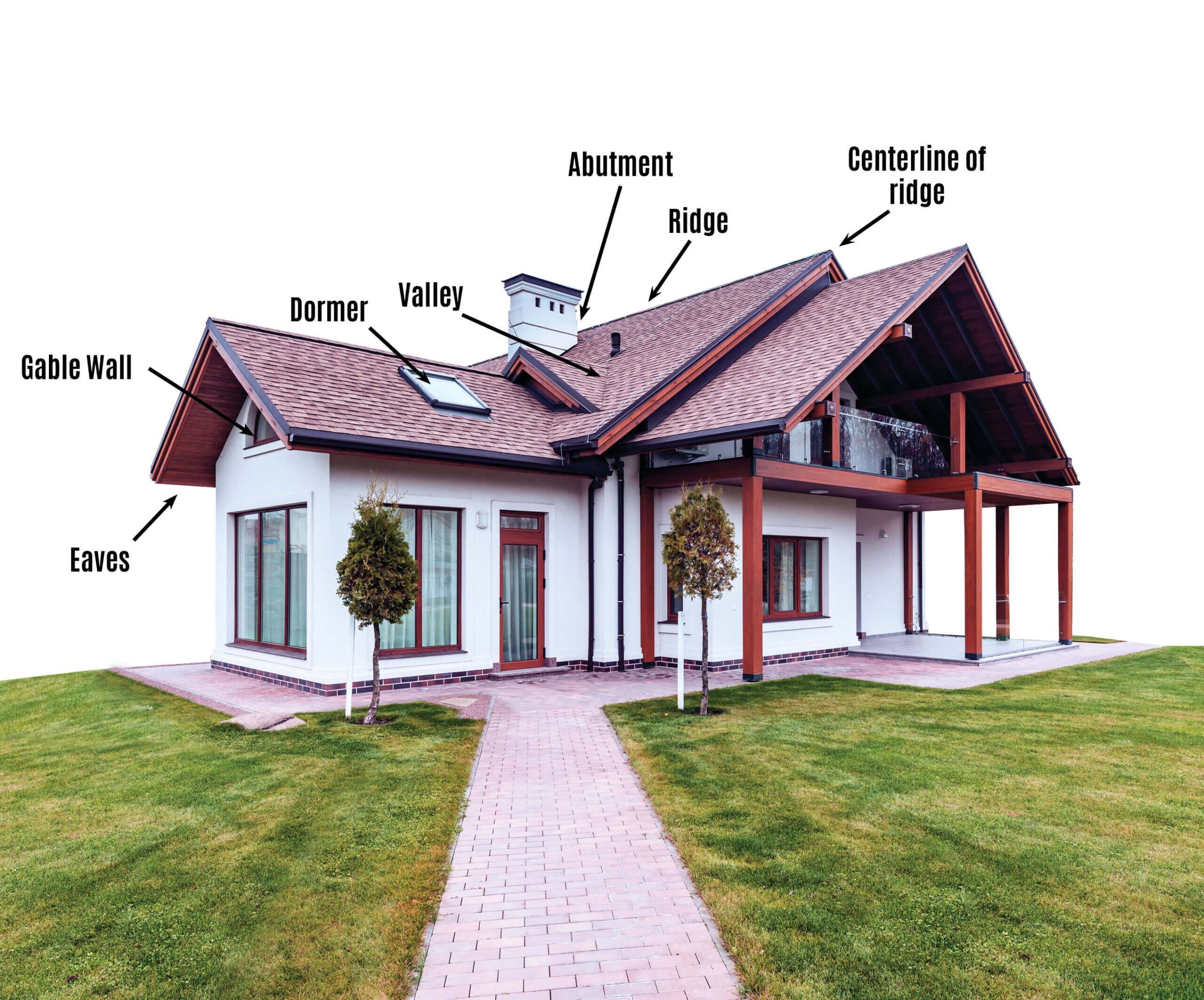When tackling a roofing project, whether it’s repairs or to-the-decking replacement, there’s homework to be done. That’s why we’ve put together a list of roofing basics to keep in mind during decision time.
Roofing Components 101
There are seven integral components to a roof system:
Rafters: Like scaffolding or a skeleton frame for your roof, these wood or metal slats inside the home support both sheathing and shingles.
Sheathing: Also known as decking, this board or sheet material attaches to the rafters and serves as the roof’s ground floor.
Underlayment: Paper-like and water-resistant, this material is placed over decking to protect your home from the elements. From thunderstorms to snowmageddons, underlayment works in tandem with membrane and vapor barriers to keep air and water from permeating through the layers.
Shingles: These are made from a variety of materials––metal, wood, slate, and composite materials––and protect the exterior from the weather. Typically, shingles are measured in squares. For example: if your roof is 2,000 square feet, and a square of shingles equals 100 square feet, you’ll need 20 squares of shingles for the job.
Flashing: Its purpose is to prevent water damage by sealing joints on the roof where they change direction. Typically sheet metal is installed directly on top of the joints.
Trim: This is installed to protect the seams of the roof’s hip or ridge, which is also known as the peak, or highest point.
Drainage: Melting snow and rainwater need somewhere to drain. Drainage needs are measured by using the slope of the roof which is determined by the rise in inches for each foot of space that lays horizontally, which is also known as the roof’s “run.”
Elements of Design
Now that we have an idea of what goes into the function of a roof, the design components are next.
Gable Wall: The triangular parts of the home extending from the eaves to the peak of the roof.
Ridge: The highest point or peak of the house.
Centerline of Ridge: Also known as the verge, this is the wall or rafter underneath the roof’s edge where a gable ends.
Valley: The areas where two sections meet and slope downward.
Eaves: The edges that hang over the home’s exterior walls.
Hip: A high point where two roof sections meet.
Abutment: A vertical area, such as a wall or chimney, that meets the roof.
Dormers: The sections of the home protruding from the roof. Not all roofs have them, yet they are designed to bring natural light into an attic or third-floor space.
Your Roof Replacement/Repair Checklist
This checklist will help you gather information while deciding which system will work best for your home’s needs:
- Age of roof and when it was last installed or repaired
- Remember: asphalt shingles typically last 20 years and wood shakers close to 30 years.
- If original or restored, are there two or more layers of shingles?
- How is your roof ventilated?
- Mold and mildew can occur without proper airflow, leaving home air quality unhealthy.
- Quick attic check for:
- Gap-free insulation layer in the attic to protect from warm or cool air loss.
- A vapor barrier under insulation and next to the ceiling to prevent attic moisture.
- Open, vented spaces for unrestricted airflow. There should be 1 foot of vent space for every 100 square feet of attic space.
- A minimum of 1 inch between the layers of insulation and roof sheathing.
- What type of shingles do you have?
- Research the warranty
- Investigate best, durable material for your climate and conditions
- What is your roof’s fire rating?
- Class A, B, or C? Class A materials––clay tiles, fiberglass asphalt composition shingles, and metal roofs––have the highest resistance to fires beginning outside your home.
- Which shingles are best for your roof’s pitch and slope grade?
- Low pitch and 1–3 inch slope—steel or water-tight material
- Medium pitch and 4–12 inch slope—asphalt and composite shingles
- High pitch and 5–12 inch slope—wood shaker or slate shingles
When you need to know more about the longevity and current condition of your roof, contact the professionals you can trust at PJ’s Roofing. Our full-service team is here to help, no matter the size or scope of your roofing project. Get in touch today!













